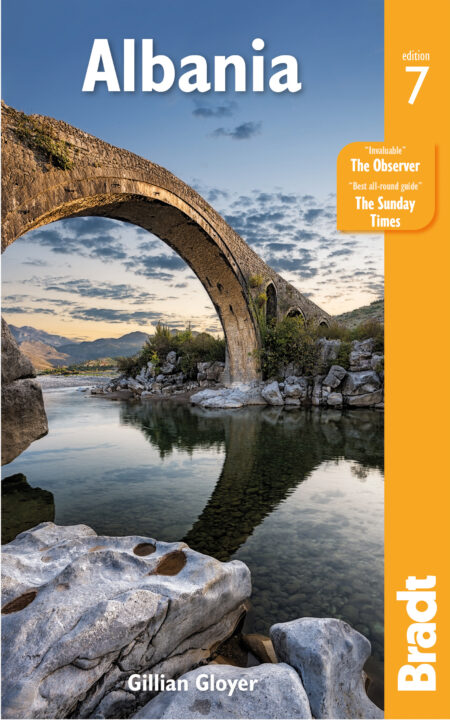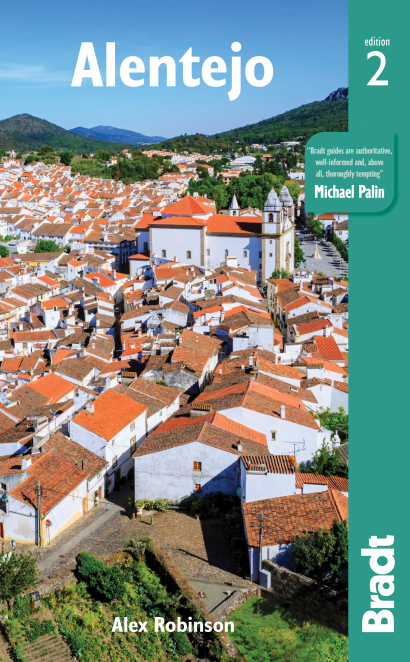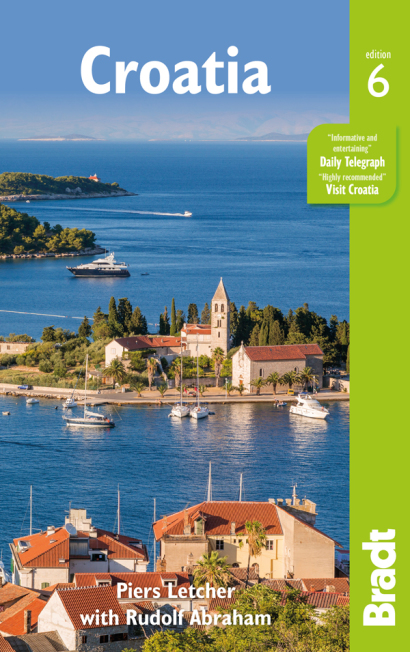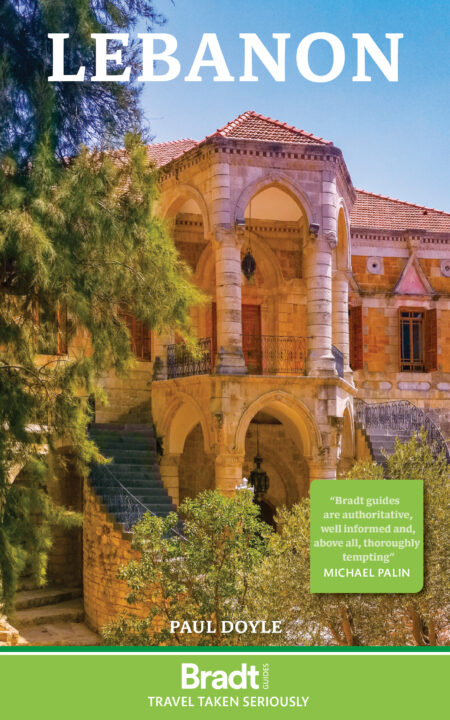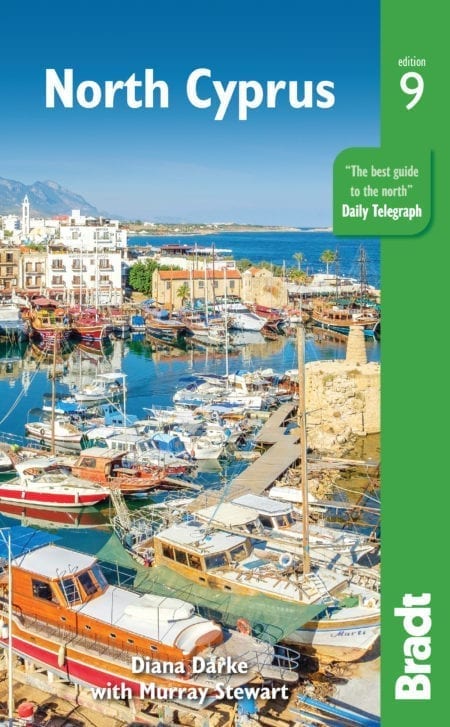Rome may have been the epicentre of the Roman Empire, but the reach of this vast civilisation was far greater than just the Italian capital. Stretching from the wilds of northern England to the north African coast, and from western Spain to the eastern reaches of Lebanon, this colossal empire left its mark on the European continent – much of which can still be seen today. Here’s our pick of the best Roman sites outside of Rome.
Jerash, Jordan
With its intricately carved marble temples and arches, great plazas, a spine-like colonnaded street and a mighty hippodrome where thousands of Romans would once have been entertained, Jerash in Jordan was clearly an outstanding city and one that shouldn’t be missed today. It has enjoyed over 6,500 years of continual occupation and is considered one of the best-preserved Roman provincial market towns in the world and one of the finest examples of urbanism from the period.
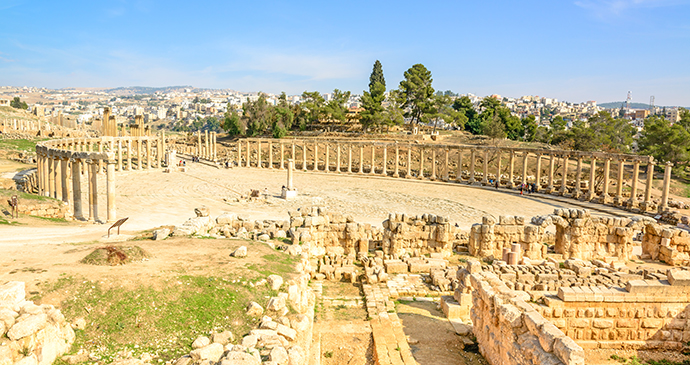
You can spend a good day exploring the park; it is huge and there are an enormous number of monumental buildings and plazas to see. However, if you only have a few hours you can easily still see its most dramatic sights. The Oval Forum is a must, as is the Cardo, and try to catch one of the chariot races in the hippodrome, which are staged most days.
Chester, England
Think Chester, think Romans. Established by the Romans around 75 AD, Deva Victrix, their westernmost fort, became one of the most important of the occupation, home of the celebrated XX Valeria Victrix legion. But it took until the early 20th century to unearth Chester’s Roman amphitheatre, hidden beneath buildings between St John the Baptist Church and Newgate for 2,000 years. Only a portion has been uncovered, about two-fifths of what is thought to be the largest amphitheatre in Britain, dating from the 1st century AD.
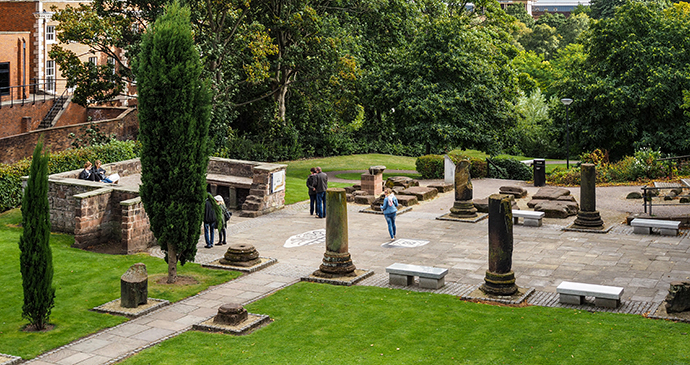
In its heyday, this was a place for military training, executions and entertainment, hosting everything from bear baiting to gladiator fights, with the capacity for about 7,000 spectators, and today it’s possible to get a sense of the amphitheatre as it must have been.
Around the corner is the Roman Gardens, a small open-air gallery containing an assortment of fragments of the fortress that have been found in Chester since Victorian times, and which also celebrates the Romans’ role in developing gardening as a pastime.
Alba Fucens, Italy
If you take an interest in ancient Rome and its wonderfully convoluted history, Alba Fucens is a must-visit. Set on the hills and framed by the mountains of the Sirente Velino Regional Park, this wonderfully well-preserved ancient city is an easy place to imagine Roman citizens going about their business. Nowadays, the Roman, medieval and modern towns, all in close proximity to one another, show the various layers of settlement in Abruzzo.
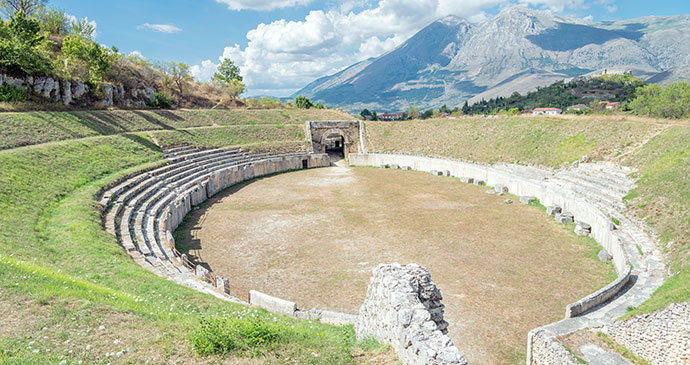
Taking in the site of the ancient city at a relaxed pace requires at least a few hours. Start at the modern town beside the ruins, otherwise known as Albe, where you will find a road that leads to the forum area. From the forum, wander down through the remains of the basilica, built in the reign of Lucius Cornelius Sulla Felix, usually known as Sulla. Taking the Via dei Pilastri to the south, you encounter the remains of shops, including a tavern.
Head back into the main area south of the basilica for the macellum (market hall) and the public baths, which were open to men and women alike. Continuing south through the baths you will encounter the large sanctuary dedicated to Hercules. To its right, remains of various domus (wealthy residential buildings) can be seen. To the left is the theatre, which is not as interesting or evocative as the town’s amphitheatre. This, a 5-minute walk away, dates back to the first half of the 1st century BC and is in very good condition, with its oval layout completely preserved. Its magnificent entrance still retains its Latin inscriptions. Traces of the city’s walls, covering a large area, can still be seen.
Beit Shean, Israel
Beit Shean in Israel was put on the ancient map owing to its strategic importance along the great north–south trade route, with the area’s abundant fertile lands an added incentive for residents, who first settled in the 5th century BCE. Beit Shean’s timeline spans 4,500 years, the decades following the Roman conquest truly its glory days, when it became one of ten cities that formed the Decapolis, a federated alliance, and the only one west of the Jordan River.
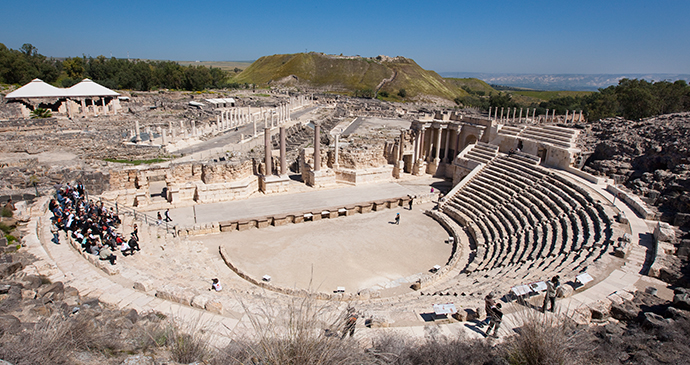
It flourished through Hadrian’s reign and, after the Bar Kokhba revolt, under Antonius Pius and Marcus Aurelius. Rapid and extravagant development saw the construction of statues, governmental buildings and after the adoption of Christianity, the amphitheatre, bathhouses and fountains, which remain Beit Shean’s most striking features.
The remains are awe-inspiring. In the middle of the park, a single standing pillar, the only erect structure unearthed, acts as a poignant reminder of the fateful fall of a once-magnificent city when it was ravaged by a violent earthquake in 749 CE.
Baalbek, Lebanon
The Baalbek complex, a homage to the gods of the Heliopolitan Triad – Jupiter, Venus and Mercury – contains some of the largest and most impressive Roman remains in the world. Lebanon’s most feted archaeological attraction, Baalbek was made a UNESCO World Heritage site in 1984 with the comment that ‘Baalbek, with its colossal structures, is one of the finest examples of imperial Roman architecture at its apogee.’
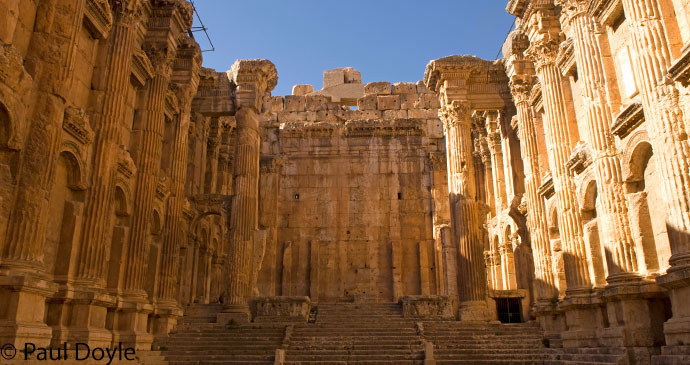
Despite a series of devastating earthquakes and a succession of conquering civilisations over the millennia, the Baalbek site is one of the most remarkably preserved complexes in the Middle East and should be on every traveller’s itinerary while in Lebanon. Visiting the site early on in the day will ensure there are fewer crowds and coach parties and yield better, warmer photographs of the ruins.
Salamis, Cyprus
Ancient Salamis, the first city of Cyprus in classical Greek times and ruled by Alexander the Great in the Roman era, boasts some of the most impressive monuments to be found on the island. The pleasantly overgrown ruins lie among fragrant eucalyptus and acacia trees, and the area covered by the site is huge: so huge that although archaeologists began work here in 1890 and have continued intermittently throughout the last century, the site is still only partially excavated.
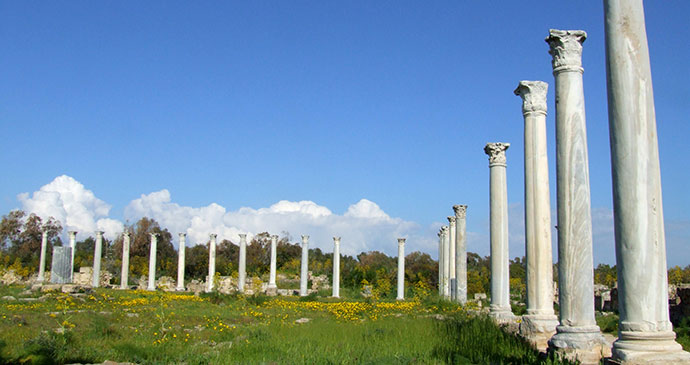
The gymnasium is the pearl of Salamis and the glimpse of lifestyle afforded here helps to convey, more than any other monument yet exposed, the magnificence and wealth that the city must have enjoyed in Roman times. Beside the gymnasium are the colossal Byzantine baths, an impressive complex of tall chambers with marble and mosaic flooring and underfloor heating, so deeply buried in sand that they were only discovered in 1926. In two of the vaulted arches traces of Roman mosaics can still be seen, mainly in reds and browns.
Pula, Croatia
Roman Pula – or to give it its full title, Colonia Julia Pollentia Herculanea – was probably founded by the emperor Augustus around the middle of the 1st century BC. It rapidly grew into a flourishing commercial city, with an estimated population in its heyday of 25,000–30,000 inhabitants.
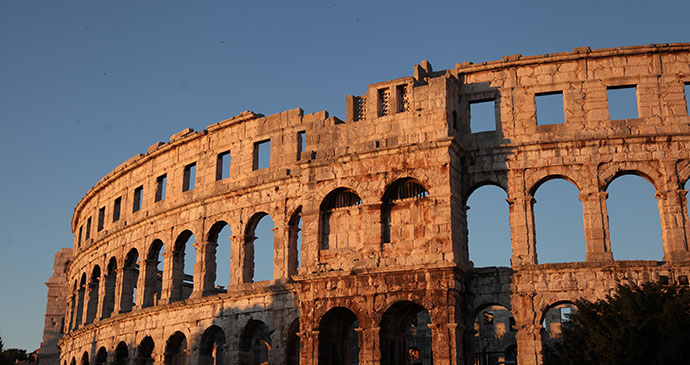
There are plenty of excellent Roman ruins to explore in the city today, including one of the most complete and best-preserved Roman floor mosaics in Croatia and the crowning glory: the amphitheatre. roughly contemporary with Rome’s Colosseum, it is one of the six largest surviving Roman amphitheatres in the world, slightly elliptical in plan and measuring some 132m x 105m, with an estimated capacity of around 20,000 spectators.
Évora, Portugal
Crowned with a magnificent ruined Roman temple, this city in the Alentejo has been protected as a UNESCO World Heritage Site since 1986. At the far northern end of the Largo Conde de Vila Flor, with dark Corinthian columns stark against the sky, is the Roman Temple, the only significant remnant of the old Roman settlement of Ebora. It once stood on one edge of the main public square, or forum, which would have served as the Roman town’s principal meeting place and market.
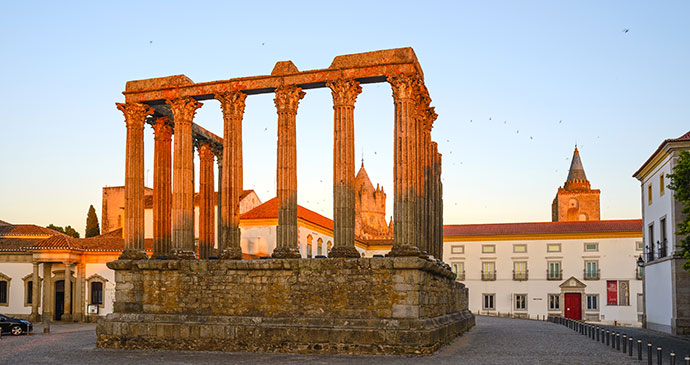
For many years the ruin was referred to as the Temple of Diana, but it is unlikely ever to have been dedicated to the goddess. The myth probably arises from associations with Sertorius – the ‘Lusitanian Hannibal’ – who had a headquarters in the city and who paid homage to Diana. Most Roman forum temples were dedicated to Jupiter or to the cult of the emperor, and it is likely that this building was no exception.
Butrint, Albania
Wealthy Romans – including Cicero’s friend Atticus – had been buying up land at Butrint throughout the 1st century BC, and in 44 BC the city became a Roman colony. In the city centre, the old Hellenistic agora (market) was remodelled and turned into a Roman forum, around which sprung shops and a bathhouse paved with a black-and-white mosaic (which is today kept covered in order to protect it).
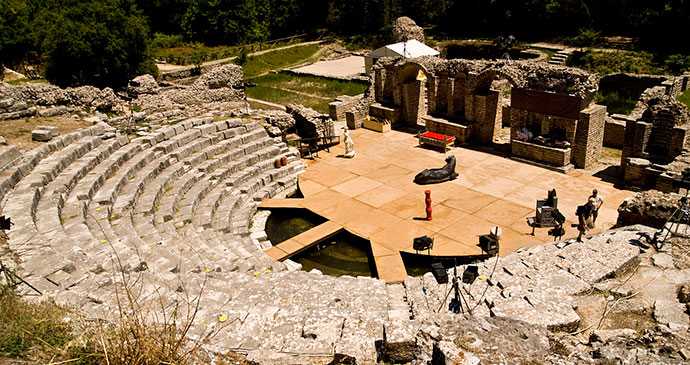
To feed the baths and fountains with water, Roman engineers constructed an aqueduct to bring water from springs 4km away across the Vrina Plain, near the modern village of Xarra in Albania. As the city grew, its wealthiest citizens began to build prestigious villas with elegant, mosaic-floored rooms arranged around a central courtyard. The best of these that can be seen today is the Triconch Palace, which even had its own water gate that visitors arriving by boat could enter the building straight from the water’s edge.
Aquileia, Friuli Venezia Giulia
Founded as a military colony on the river Natissa in 181 BC, Julius Caesar was known to have wintered his army in Aquileia, and Augustus made it the capital of the X Regio Venetia et Histria, receiving Herod the Great here. Its port on the Natissa grew into a key trading centre with a vast multi-cultural population and, once the fourth largest city in Italy, Aquileia was one of the first cities where Christianity was openly practised.
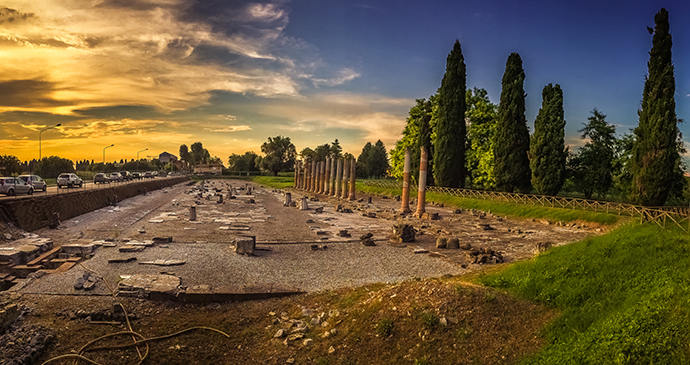
Unique in that it was the only great Roman-era city in Italy to shrink into a village, today Aquileia’s 3,500 inhabitants no longer receive emperors, but build yachts and tend to their vineyards and the tourists who flock to see the most important Roman archaeological site in northeast Italy – a UNESCO World Heritage Site since 1998.
More information
For more information, check out our guides:
